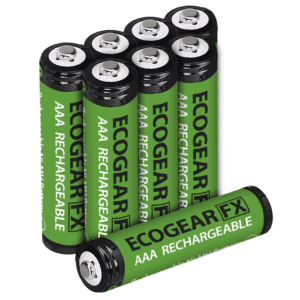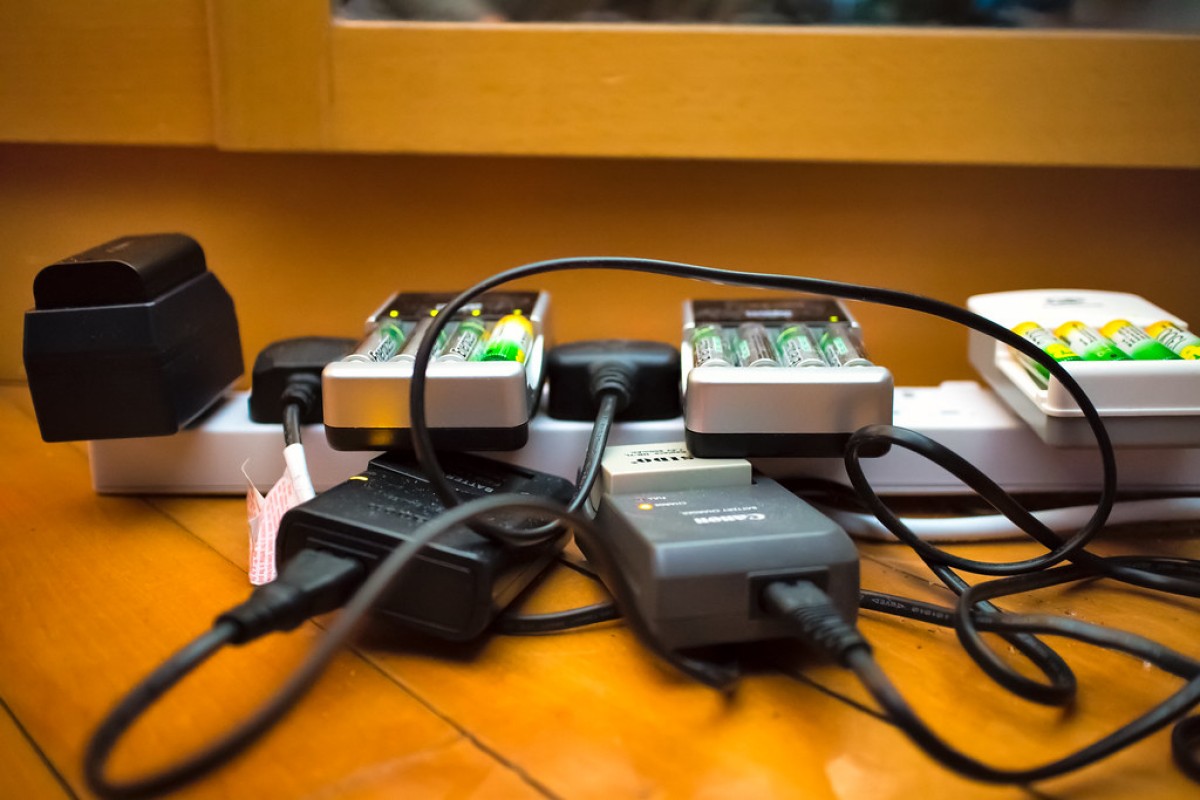What Are NiMH Batteries?
It’s undeniable that rechargeable batteries for consumer electronics and other devices offer a whole host of benefits over disposable ones. Have you ever wondered what are NiMH batteries? If so, the following guide discusses the subject in great detail and explains the differences between them and conventional alkaline and lithium-ion batteries.
The primary advantage of rechargeable batteries is that consumers save a lot of money by recharging existing batteries. A rechargeable nickel metal hydride battery (NiMH or Ni–MH) isn’t just used for battery-powered consumer devices. It also has a slew of other applications, such as hybrid vehicle battery packs.
What Is a Nickel Metal Hydride (NiMH) Battery?
A Nickel Metal Hydride (NiMH) battery is a popular type of battery often used to power consumer electronics, toys, and tools, among other applications. It’s a rechargeable type of battery and typically gets used to replace non-rechargeable alkaline batteries.
The history of NiMH batteries dates back to the late 1960s[1]. While consumer-grade NiMH batteries were available in 1989, it wasn’t until the end of the 20th century that they grew in popularity with consumers worldwide.
NiMH batteries like the AAA rechargeable batteries from EcoGear FX typically have two to three times the capacity of older rechargeable NiCd (nickel-cadmium) battery technology, plus they’re an ideal substitute for other similarly-sized rechargeable batteries.
Comparisons Against Lithium-Ion Batteries
When it comes to rechargeable batteries, consumers have several options at their disposal; one of which is the lithium-ion (Li-ion) battery. While NiMH rechargeable batteries are popular, Li-ion alternatives have two significant advantages: higher capacities and voltage.
However, the disadvantage of using Li-ion batteries instead of NiMH examples is the cost; Li-ion rechargeable batteries are more expensive to purchase than NiMH.
Another disadvantage of Li-ion batteries is their environmental impact. That’s because lithium mining is toxic and can pollute neighboring rivers and local habitats – especially if strict control measures aren’t in place, as is sometimes the case in third-world mines[2].
Comparisons Against Alkaline Batteries

NiMH batteries offer numerous advantages over single-use alkaline alternatives. For example, they last two to four times longer than alkaline batteries. Plus, the cost of operation is significantly lower than alkaline ones. They also have a long life. Examples like the AAA rechargeable NiMH batteries from EcoGear FX boast a cycle performance of 90% of the initial capacity at 700 cycles and a cycle life of up to 1,000 charges.
Typical Applications for NiMH Batteries
If you plan on using rechargeable NiMH batteries, it’s worth noting the applications that work best with them.
For instance, NiMH batteries are ideally suited to consumer electronics and other devices with high energy consumption. Examples include:
- Digital cameras
- Flashlights
- Toys
Of course, the above is by no means an exhaustive list. One general rule of thumb is that rechargeable NiMH batteries are a good fit for applications where you constantly have to buy replacement alkaline batteries.
There are some circumstances where you shouldn’t use a rechargeable nickel metal hydride battery. For example, you wouldn’t use NiMH batteries in devices that infrequently consume low levels of power, such as smoke alarms and TV remote controls.
That’s because NiMH batteries discharge at a rate of around 1% each day; if you used them in smoke alarms, you’d need to recharge them every month or so.
Why Use a Nickel Metal Hydride Battery?
If you’re looking for a cost-effective and reliable method of powering battery-operated consumer electronics and other devices, you should consider using rechargeable NiMH batteries.
Firstly, NiMH batteries are available in different formats like AA and AAA. Secondly, they’re available in several mAh (milliAmp hours) ratings, so you’ll easily find the best configuration for your needs.
A third reason to use rechargeable NiMH batteries instead of single-use alkalines, for example, is they don’t lose their charging capacity in their lifespan. NiMH batteries only lose around 10% to 15% of their capacity over the course of 400 to 800 cycles.
Lastly, NiMH batteries retain their voltage for approximately 80% of each cycle. In comparison, alkaline batteries only keep their voltage until they reach 50% capacity, where the levels gradually drop to one volt or less.
How Powerful Are NiMH Batteries?
As mentioned earlier, you can buy NiMH batteries in different mAh ratings. But, how powerful a battery can you get? One of the concerns that consumers have about battery-powered devices is the amount of power they produce.
While it’s true that some consumer electronics and devices don’t draw much power from batteries, others like games console controllers and digital cameras do. For such applications, it makes sense to have high-output batteries powering those devices.
Depending on the size format (i.e., AA or AAA), it’s possible to buy rechargeable NiMH batteries that offer a nominal capacity of up to 2,500 mAh.
Are NiMH Batteries Eco-Friendly?
One of the obvious environmental benefits of using NiMH batteries over alkaline ones is that you can reuse them hundreds of times before they are no longer fit for purpose. That means you won’t have to recycle or throw away as many batteries.
Of course, there are some other green benefits. For example, did you know rechargeable NiMH batteries contain up to 23 times fewer non-renewable natural resources in their construction?[4]
They also have less impact on global warming, air pollution, and water pollution than alkaline alternatives.
Conclusion
There are many advantages to using rechargeable NiMH batteries compared with single-use alkaline batteries and even some other rechargeable batteries. They’re also suitable for a raft of applications at home and in the workplace, and they have excellent green credentials.
[1] https://en.wikipedia.org/wiki/Nickel%E2%80%93metal_hydride_battery#History
[2] https://www.nsenergybusiness.com/features/lithium-ion-battery-environmental-impact/
[3] https://guides.library.illinois.edu/battery-recycling
[4] https://www.onegreenplanet.org/lifestyle/rechargeable-batteries-a-better-choice/





